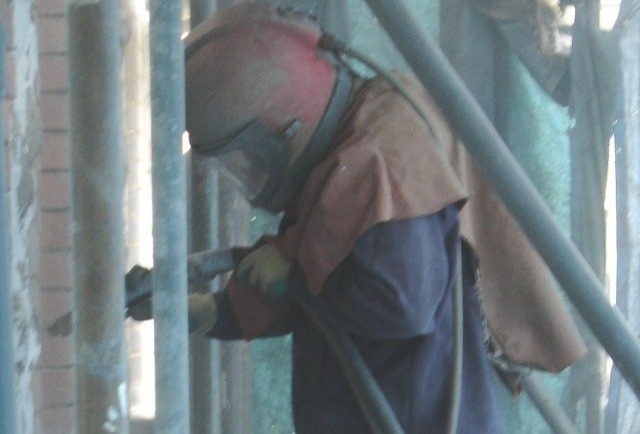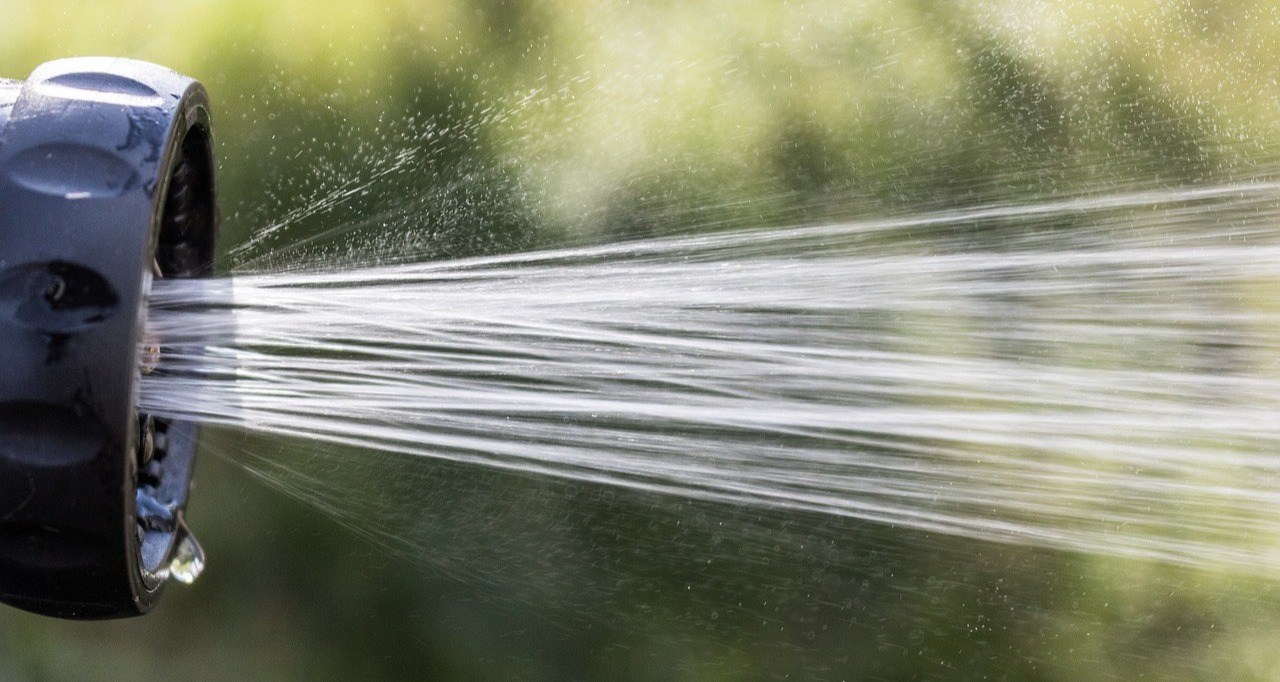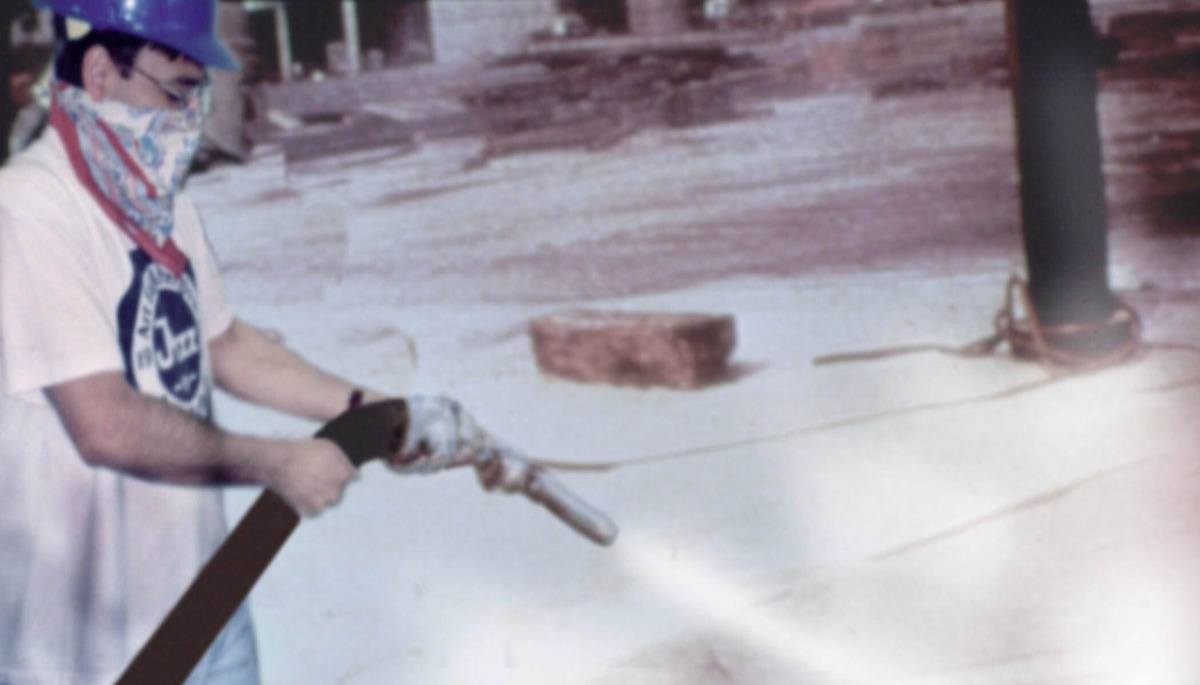What's The Difference Between Sand Blasting And Shot Blasting?
While sand blasting and shot blasting are both surface cleaning methods, they differ in the medium they use and the application of that medium. This article will take you through the essential differences between the two methods and the advantages and disadvantages of either approach.
What Is Sandblasting?
Sandblasting is the method most people picture when they think about abrasive surface cleaning. Essentially, the process involves projecting a stream of abrasives, in this case, organic materials, against a surface to remove any dirt or unwanted material from it. The propelling mechanism uses compressed air as a power source to project the sand against the chosen surface.
There is no limit to the number of surfaces that could benefit from sandblasting. This cleaning method is typically used in industrial processes when removing stubborn materials such as rust, dirt and oil. It is also a good method for preparing surfaces for painting or powder coating purposes.
As a pre-finishing technique, sandblasting has been around for over a century. However, in that time, the method of sandblasting has drastically improved. From erratic streams of inaccurate sand that generate toxic dust clouds to today's sophisticated enclosed systems that provide accurate control of the abrasive stream. Sandblasting mediums have also improved over time to become far less toxic and safer to use.
Through these improvements, sandblasting has become the abrasive treatment method of choice. Its primary application is the preparing of sensitive surfaces or materials before they are professionally finished. Sandblasting systems are also more cost-effective than similar options, with an easier operation for the contractor using them.

What Is Shot Blasting?
Shot blasting differs from sandblasting in one particular way: the method by which the abrasive medium is projected onto a surface. While sandblasting takes compressed air to create an abrasive stream, shot blasting uses centrifugal or mechanical forces to generate a similar force when blasting shot. Shot blasting equipment utilises a spinning mechanism to accelerate the abrasive medium before blasting it against the chosen surface.
Shotblasting is far more aggressive than sandblasting and is majoritively used when more force is required to prepare certain surfaces. It is also better suited to use more robust mediums when cleaning or to prepare materials. Given the increased force and power of shot blasting, the process must be contained so that no other materials become damaged during the process.

Shot blasting is mostly found in more industrial settings, used in large-scale projects. For example, shot blasting tanks are often used alongside steel shot or grit blasting mediums to restore and prepare vehicle frames or steel containers when being reconditioned. Shot blasting is also used when shot peening engine components, as it increases their malleability.
Sandblasting Vs Shot Blasting
When it comes to industrial surface preparation, there is not one abrasive method that suits all purposes. Given the wide range of surfaces used for all the different types of manufacturing, it only makes sense that there are several surface preparation techniques available. Naturally, sandblasting and shot blasting are two of the most common.
However, because these two methods are the most common, they are often mistaken for one another, the two names being used interchangeably for different applications. While they are both abrasive preparation techniques, it is important to know what distinguishes them, so you can better understand which method suits which surface.
The main difference between sandblasting and shotblasting is the medium used during the process. While shot blasting equipment uses abrasive shot, typically made from carbon grit, aluminium oxide or steel shots, sandblasting is quite different. Sandblasting equipment can accommodate metallic mediums, but they most often use organ materials or glass.
As you might imagine, sandblasting got its name from the original silica sand medium used when preparing surfaces. However, in modern sandblasting processes, silica sand is rarely, if ever, used. This is because of the clouds of silica dust created when using abrasive sandblasting, which are toxic and can lead to serious respiratory health conditions, such as lung cancer.
Another difference between the two methods is how the abrasive stream is generated to transport the medium to the chosen surface. In shot blasting, the medium is spun in a centrifugal wheel at high speed. This is done in a closed environment to limit collateral damage, given how powerful shotblasting spray can be to surfaces.
On the other hand, sandblasting uses either water or compressed air to generate pressure for the abrasive stream. While this generates a good pressurised system to blast the medium at the chosen surface, it cannot generate as much speed as the shot blasting method. Therefore, you can imagine how the two different methods would suit different applications.
Is Sand Used In Abrasive Blasting?
At one point, silica sand was the main medium used in abrasive blasting. While it is a widely available material, it does have its disadvantages. For example, sand holds onto moisture extremely well, making it difficult to spread as an abrasive stream with compressed air. It can also contain natural contaminants that make it more difficult to use in blasting.
Of course, the health risks involved in using silica sand as an abrasive medium is the biggest reason why we do not see it as often these days. When sand is blasted at a surface, it creates a thick cloud of silica dust. This dust is highly toxic when inhaled and can lead to respiratory conditions, such as silicosis and lung cancer.

Which Should I Choose?
This article gives you a good idea of the differences between the two most common blasting methods and their particular benefits and negatives. However, when considering the difference between shot blasting and sandblasting and which is best for you, this deliberation is best left to the professionals. Depending on what material you need to prepare, specialist blasters will know exactly which process and medium will work best for you.
Do you require blast cleaning in London or throughout the UK? Contact us on our phone number or via email for further information or advice. If you are interested in a dustless blasting service, RM Specialist Blast Cleaning is always happy to help and assist you.
We can offer high-quality training that may only take around 5 or so minutes. We have professionals on standby so that you can happily stop by and demo our machines at any hours of the day.

